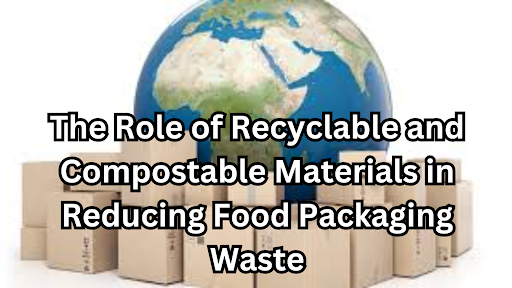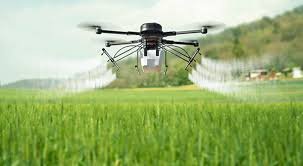As the world becomes more conscious of environmental concerns, the shift toward sustainable practices across industries has accelerated. One of the most notable areas where this transformation is taking place is in food packaging. The growing demand for eco-friendly packaging solutions has prompted food manufacturers, retailers, and packaging companies to rethink their strategies, aiming for more sustainable, recyclable, and biodegradable alternatives. Among the leaders in this space is Sonoco Asia, a company that has consistently been at the forefront of innovative, sustainable packaging solutions for the food industry.
In this article, we will explore the trends, innovations, and challenges associated with sustainable food packaging and how Sonoco Asia is contributing to a more sustainable future for food packaging.
The Growing Demand for Sustainable Food Packaging
Sustainability has become a buzzword in the food industry, with consumers becoming more aware of the environmental impacts of their purchasing decisions. The use of plastic packaging, in particular, has come under scrutiny due to its contribution to pollution, especially in oceans and landfills. As a result, there has been a significant shift in consumer preferences toward brands that prioritize sustainable practices.
According to recent studies, over 70% of consumers prefer eco-friendly packaging, with younger generations leading the charge. This has pushed food companies to explore alternatives to traditional packaging materials, such as single-use plastics, and adopt more sustainable solutions. In response to these consumer demands, packaging companies like Sonoco Asia are introducing innovative packaging solutions that are both functional and environmentally friendly.
Sustainable Food Packaging: Key Trends
Several key trends are driving the rise of sustainable food packaging in the food industry. These trends are not only reducing the environmental impact of packaging but also improving the overall efficiency and safety of food products.
1. Shift to Biodegradable and Compostable Materials
One of the most significant trends in sustainable food packaging is the growing use of biodegradable and compostable materials. Unlike traditional plastic, which can take hundreds of years to break down, biodegradable packaging materials are designed to decompose more quickly and safely when exposed to natural elements.
Materials such as plant-based plastics, paper, and edible packaging are gaining popularity. These alternatives are often made from renewable resources, such as corn, sugarcane, or seaweed, making them a more eco-friendly choice. In addition to being biodegradable, many of these materials are also compostable, ensuring that they break down into nutrient-rich soil, further reducing their environmental impact.
2. The Rise of Recyclable Packaging
Recycling has long been a cornerstone of sustainable packaging, and this trend is intensifying as governments and consumers push for greater recycling rates. Today’s eco-conscious consumers want packaging that is not only made from recyclable materials but also easy to recycle.
Food brands are increasingly turning to recyclable materials such as glass, aluminum, and certain plastics that can be efficiently processed in recycling facilities. The challenge for packaging companies like Sonoco Asia is ensuring that their products are designed for easy recycling, reducing contamination, and promoting consumer education on proper recycling practices.
3. Minimalist and Functional Packaging Design
Another trend gaining traction in the food industry is the movement toward minimalist packaging. Brands are opting for designs that use fewer resources and reduce waste while still maintaining the necessary functionality and protection for the food product. This shift is often referred to as “right-sizing,” where packaging is streamlined to fit the exact needs of the product without excess materials.
Minimalist packaging can include thinner films, smaller boxes, or flexible materials that require less energy to produce and transport. This trend not only reduces the carbon footprint of packaging but also helps food brands reduce costs and meet consumer demands for more sustainable options.
4. Smart Packaging for Freshness and Sustainability
Innovative packaging technologies are also playing a key role in the rise of sustainable food packaging. Smart packaging technologies, such as modified atmosphere packaging (MAP) and active packaging, are designed to extend the shelf life of food products while reducing food waste. By maintaining optimal freshness, these technologies help to prevent food spoilage, ultimately reducing the amount of food that ends up in landfills.
For example, Sonoco Asia has developed packaging solutions that incorporate advanced barrier films and materials that not only keep food fresh but also extend its shelf life, all while being environmentally friendly.
Innovations by Sonoco Asia in Sustainable Food Packaging
As one of the leading players in the packaging industry, Sonoco Asia has been at the forefront of driving sustainable practices in food packaging. The company has consistently invested in research and development to create packaging solutions that meet the growing demand for environmentally friendly alternatives.
1. Sustainable Packaging Solutions for the Food Industry
Sonoco Asia offers a wide range of sustainable food packaging options, including flexible packaging, rigid containers, and paper-based solutions. These packaging materials are made from renewable resources and are designed to be fully recyclable or compostable. The company is dedicated to reducing its environmental footprint and offers solutions that are aligned with global sustainability goals.
For instance, Sonoco Asia has worked on developing biodegradable packaging materials that are suitable for various food products, including snacks, fresh produce, and frozen foods. These materials provide the same level of protection and durability as traditional packaging while being more sustainable.
2. Circular Economy in Food Packaging
One of the key areas where Sonoco Asia is leading the charge is in promoting a circular economy in the food packaging industry. The circular economy model is based on the concept of reducing, reusing, and recycling resources to minimize waste and make the most of existing materials.
Sonoco Asia’s commitment to a circular economy includes developing packaging solutions that can be easily recycled and reused, as well as working with customers to optimize their packaging systems for sustainability. By prioritizing recyclability and reusability, Sonoco Asia is helping food brands reduce their reliance on single-use packaging and move toward more sustainable business models.
3. Collaboration with Food Brands for Sustainability
Another important aspect of Sonoco Asia’s approach to sustainable packaging is its close collaboration with food brands. The company works with manufacturers to design custom packaging solutions that meet both environmental and functional needs. By collaborating with food companies, Sonoco Asia ensures that the packaging solutions they provide are aligned with the brand’s sustainability goals and product requirements.
For example, Sonoco Asia has partnered with major food brands to create recyclable snack packaging that is both lightweight and functional, reducing material waste while ensuring product freshness.
The Challenges Ahead
While the shift to sustainable food packaging is a promising development, it is not without challenges. One of the main hurdles is the cost of sustainable materials, which can be more expensive than traditional plastic packaging. Additionally, the infrastructure for recycling and composting varies from country to country, making it difficult to ensure that packaging materials are properly processed.
Despite these challenges, the food packaging industry, led by companies like Sonoco Asia, continues to innovate and push the boundaries of what is possible. As consumer awareness grows and more brands commit to sustainability, the demand for eco-friendly food packaging will continue to rise, encouraging further innovation and investment in this critical area.
Conclusion
The rise of sustainable food packaging is reshaping the food industry, with eco-friendly alternatives becoming the norm rather than the exception. Trends such as the shift to biodegradable materials, recyclable packaging, minimalist designs, and smart packaging technologies are all contributing to green packaging, more sustainable future.
Sonoco Asia, with its commitment to innovation and sustainability, is playing a pivotal role in this transformation. By providing cutting-edge, environmentally friendly packaging solutions, the company is helping food brands reduce their environmental impact while meeting the demands of increasingly eco-conscious consumers.
As the demand for sustainable packaging solutions continues to grow, it is clear that the food packaging industry will play a crucial role in shaping the future of sustainable consumption. With the help of leaders like Sonoco Asia, the industry is well on its way to achieving a more sustainable and circular future.



